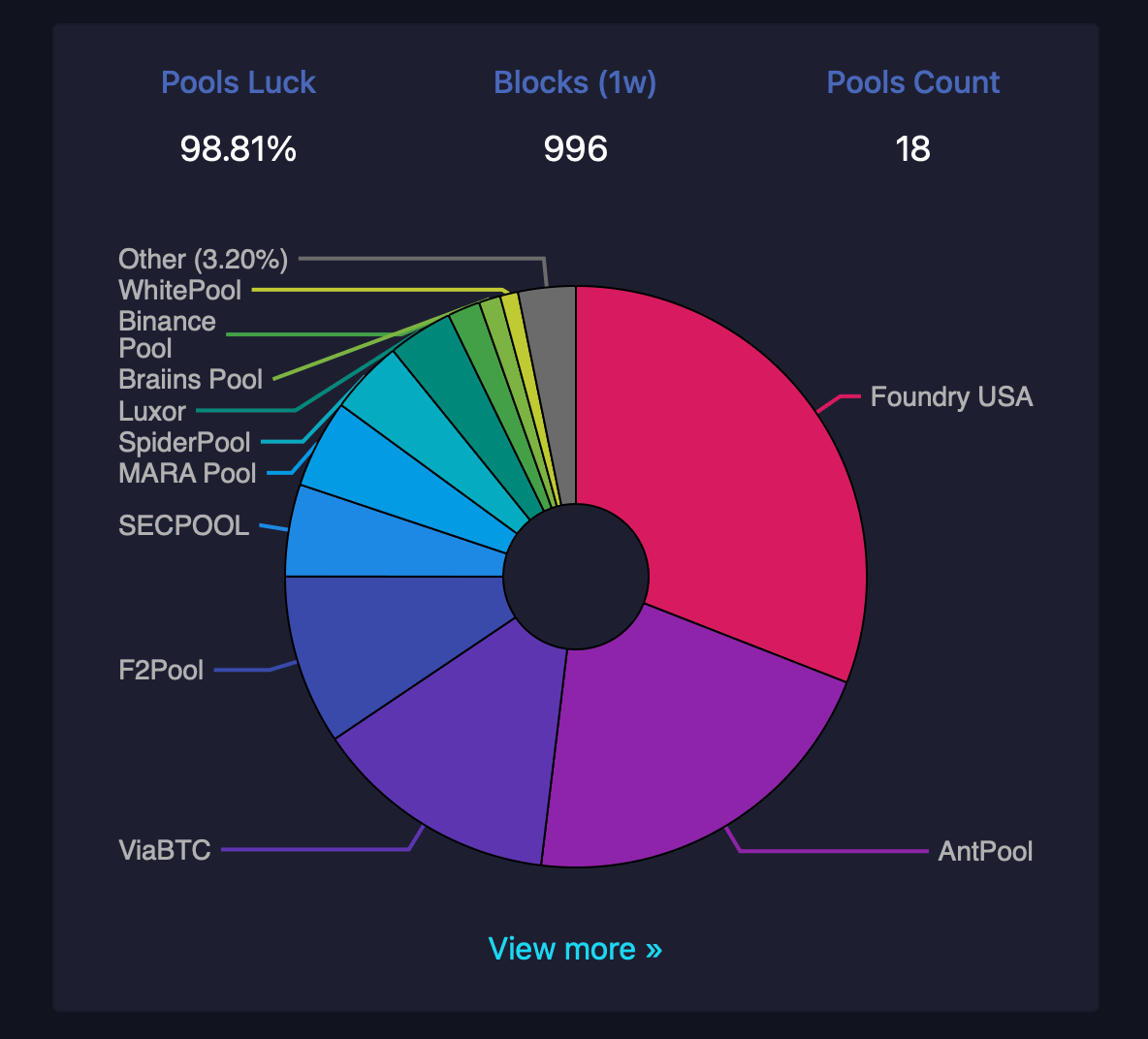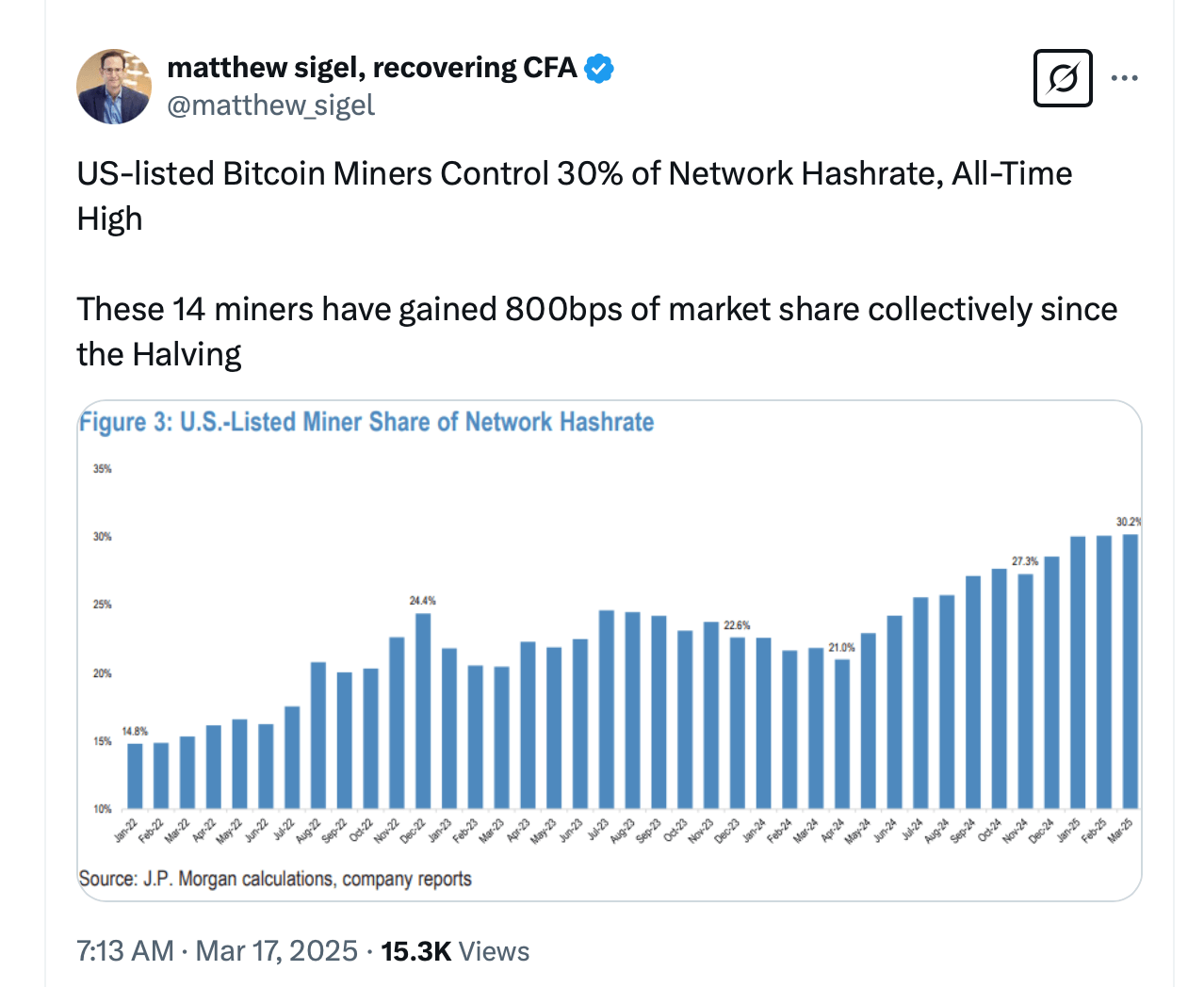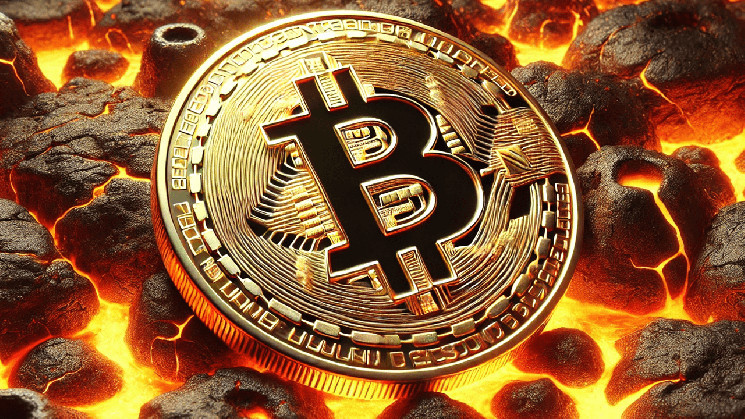Bitcoin Mining Pool Foundry, Antpool and VIABTC collectively order greater than 65% of the community’s international hashrate, amplifying dominance by means of scale, aggressive pricing fashions, and tailor-made incentives for members.
What’s a mining pool?
Collaborative mining swimming pools combination computational sources from particular person miners to reinforce block discovery odds and distribute rewards based mostly on the hash energy they contribute. As of March 20, 2025, the full community hashrate for Bitcoin is 809.65 EH/s. Main this sector is Foundry USA (246 Eh/s), Antpool (173 Eh/s), and Viabtc (111 Eh/s) (111 Eh/s), in line with statistics from Mempool.area.

Their huge infrastructure attracts miners who prioritize secure returns, increasing the dominant pool and perpetuating a essential suggestions loop whereas smaller opponents face stress.
Foundry USA
Foundry USA at present holds the highest place and pilots nearly 30% of Bitcoin’s complete hashrate. The attraction of the pool is reportedly attributed to strict safety protocols, together with KYC/AML adherence, handle whitelisting, and SOC 2 certification. That “donation” initiative additional distinguishes it, permitting miners to allocate a portion of their income to Bitcoin growth, with the purpose of rising goodwill inside their ecosystems.
Foundry’s US-based enterprise claims to supply regulatory predictability. It is a key draw for miners who’re cautious of geopolitical volatility. In all probability a crypto mining mine with publicly accessible miners Bit Farm, Hat8 and devoted swimming pools for foundry. Of the final 998 blocks, Foundry found 310.
Antpool
Antpool ranks second in 173 EH/s and leverages its partnership with Bitmain Applied sciences (based in 2013) to supply reliability and belief. The pool employs pay per final N share (PPLN) mannequin with no charges to optimize the profitability of the miners. Merged mining options enable simultaneous participation in a number of blockchains, rising the potential for revenue at no extra price.
Antpool’s geographically distributed community of nodes (by means of the US, Germany and China) minimizes downtime, and low fee thresholds and robust repute cements its recognition. Bitfufu and Bitedeer are mentioned to dedicate hashrates in the direction of Antpool’s collective computing energy. With the final 998 Bitcoin block, Antpool’s hashrate was capable of win 209 blocks.
VIABTC
The third VIABTC at 111 EH/s is designed to prioritize revenues and enhance minor returns by way of its proprietary PPS+ payout system. The platform enhances its attraction by means of built-in monetary instruments reminiscent of crypto-assisted loans and hedging methods, together with real-time telegram notifications for hashrate shifts. VIABTC’s adaptable fee choices make them a compelling possibility for miners. The pool provides PPS+, PPLN, and solo fee strategies to cater to a wide range of mining preferences.
Particularly, PPS+ is a VIABTC unique system and is designed to maximise profitability. This is a bonus highlighted by the super-large critiques. VIABTC, which helps merge mining between Litecoin (LTC) and Bitcoin Money (BCH), is alleged to supply a number of alternatives for diversification. Miners reportedly collect on this specific pool for his or her intuitive interfaces, cell apps and international consumer base. Of the 998 blocks mined, the VIABTC pool was capable of seize 136.
Why Miners Select a Bigger Pool
Miners more and more want giant swimming pools reminiscent of Foundry, Antpool, and VIABTC due to their reliability and secure reward distribution. These entities mitigate operational dangers by means of subtle infrastructure, devoted help, and cost-effective pricing buildings.

Nonetheless, the ensuing centralization blows the controversy concerning the elementary spirit of Bitcoin, as concentrated hash energy can theoretically expose networks to coordinated vulnerabilities. These debates have usually resurfaced, however to today none really restrains centralization. As of March 2025, the trio’s 65% hashrate share displays its ongoing trajectory in the direction of rising centralization, except the scenario adjustments.
Miners profit from stability and effectivity, however this integration challenges the decentralized beliefs of Bitcoin. For instance, individuals speculate that sooner or later, if centralization continues unabated, sure entities and transfers could also be blocked. Financial pragmatism continues to advertise this pattern, suggesting that centralization doesn’t change in miner priorities or technological breakthroughs. The continuing stress between operational practicality and philosophical rules stays a essential dynamic for the evolution of Bitcoin.












